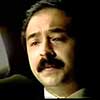
Nasrat Sharqi was one of the most influential Afghan artists in America throughout the 1980s and 90's. His music career started at a young age. He attended lycee Istiqlal in Kabul and he attended the Musical academy in Kabul with peers such as Said Omar and Ehsan Aman. He later travelled to Ankara Turkey to study at the University of Ankara.
In the late 1980s circa 1989, Nasrat Sharqi was the first Afghan musician to introduce the one-man-band to the Afghan community in the USA. With his keen talents and technological savvy he programmed a yamaha workstation keyboard with Afghani taals, better known as rhythms. As time went on newer technology and the introduction of MIDI, he introduced yet another instrument which is still used by Afghan singers today; the Roland R8 drum machine. This drum machine along with its Ethnic Tabla card increased the precision and audio visualization of a full Afghan band controlled by one man. He was also responsible for introducing the Technics line of keyboards to the Afghan music scene. He quickly became the most popular Afghan singer in America. Constantly performing at events in California, Texas, New York, Maryland, Virginia, and many other states including Canada. His love and devotion to music led him to create dozens of songs which remain hits till this day. Songs such as Gadi wan, Jaan-0-Jaanan em Naroo, Ay Dilbaram, and many others. Nasrat Sharqi was a singer who sang with a unique and soft melodious voice. His ability to maintain a note for very long periods of time was a testament to his superb talent and practice. He also mastered the art of moving smoothly and powerfully from a low note and octave quickly to a very high note and octave. This style was unique to only one other Afghan singer and that is the legendary Ahmad Zahir. He was also known for being the king of rhythms. He had a great amount of knowledge with percussion instruments. Therefore his beats were programmed very realistically and attractively to the listener.
The demand for his music was very high and at times impossible to satisfy. His productive and generous career abruptly came to a stop in late summer of 1994 when he arrived home from a multi-state tour. He complained of pains in his chest and soon after collapsed and had a devastating stroke. His heart gave up on him and paramedics quickly arrived to perform cpr. They managed to get his heart pumping again and he went to the hospital. He remained in a coma for three months. His elder mother sat by his bedside along with his best friend/brother Siddiq Alim. After waking up from his coma Nasrat Sharqi suffered from serious brain damage. A few days after leaving the hospital he got dizzy and collapsed hitting his head on the pavement. This led him to go back to the hospital again. This accident resulted in a blood clot in his brain and destroyed his short term memory capabilities and affected his basic motor skills. It seems as though he tried too hard to satisfy his people. He dedicated his life to sharing his golden voice and musical talents with his people. He went nights and nights without sleep and constantly traveled by car, gig after gig, state after state, night after night. In the end this took a huge toll on his body.
Today Nasrat Sharqi is alive, contrary to rumors floating around that his stroke was tragic. He currently lives with his elder and sweet mother in Arlington, Virginia. He is but a memory of the musical legend and icon that so many Afghans grew up listening to in the 80's and 90's. He is currently too sick to play keyboard anymore or sing. Unfortunately the brain damage he suffered is permanent and there is very little hope of him making a full recovery.
Nasrat Sharqi's Albums

